Name Goya Completed 1940 Launched 1940 Beam 24 m | Laid down 1939 Name Goya Length 146 m Builder STX Europe | |
Fate Confiscated by Germany during invasion of Norway | ||
Goya was a Norwegian motor freighter. Completed in 1940 for Johan Ludwig Mowinckel Rederi company, she was named after Francisco de Goya. Following the invasion of Norway she was seized by Germany and pressed into service of the Kriegsmarine as a troop transport.
Contents
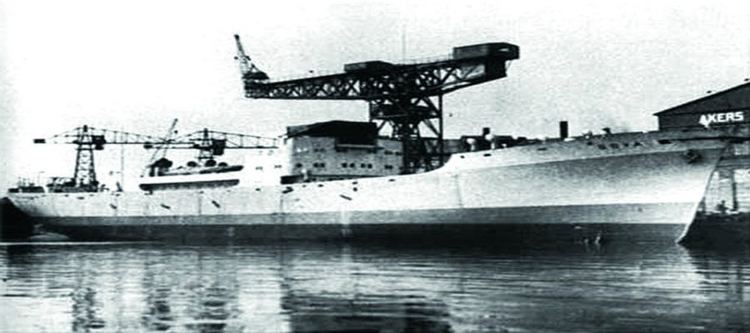
Near the end of the Second World War, the ship took part in Operation Hannibal, the evacuation of German military personnel and civilians from German-held pockets along the Baltic Sea. Loaded with thousands of refugees and Wehrmacht soldiers, the ship was sunk on 16 April 1945 by the Soviet submarine L-3.
Most of the crew and passengers died. The sinking of Goya was one of the biggest single-incident maritime losses of life of the war, and as such one of the largest maritime losses of life in history, with just 183 survivors among roughly 6,700 passengers and crew.
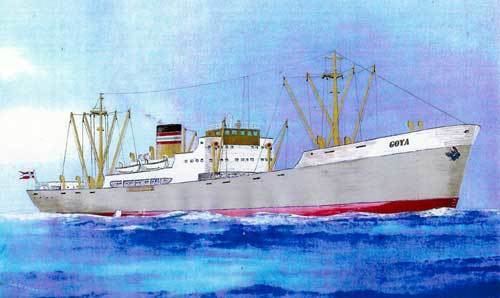
Silent hunter 4 1 5 mv goya test
Early service
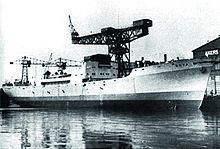
Goya was originally built as a freighter by the Akers Mekaniske Verksted shipyard in Oslo in 1940. The ship was 146 m (475.72 feet) long and 17.4 m (57.08 feet) wide, had a capacity of 5,230 GRT, and a top speed of 18 knots. Following the German occupation of Norway, the ship was seized by Germany and in 1942 refitted as an auxiliary transport for German U-boats. In 1943 she was turned into a depot ship, but the following year she was moved to Memel (modern Klaipėda), where she was used as a target ship for torpedo practice by the 24th U-boat Flotilla.

In 1945, during Operation Hannibal, Goya was used as both an evacuation ship and Wehrmacht troop transport, moving people from the eastern and southern Baltic to the west. Her commanding officer was Captain Plünnecke. Contrary to popular belief, Goya was not a hospital ship but rather an ordinary troop transport.
Sinking
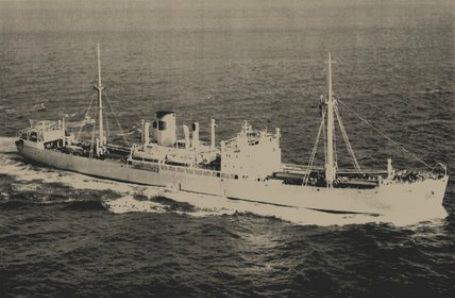
On 16 April 1945, Goya was sailing from Gdynia, around the Hel Peninsula and across the Baltic Sea to western Germany. The convoy included Goya, as well as two smaller vessels (Kronenfels and a steam tug Aegir) and two minesweepers as convoy escort: M-256 and M-328. The ship was overloaded with German troops and civilians fleeing from the Red Army, including 200 men of the 25th Panzer Regiment (part of 7th Panzer Division).
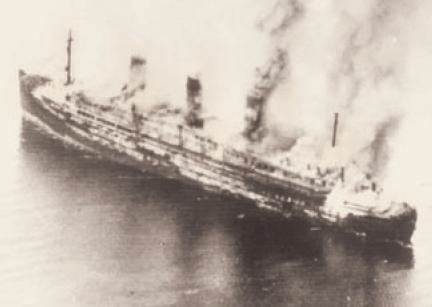
Four hours after leaving the port, close to the southern tip of Hel Peninsula, the convoy was attacked by Soviet bombers. During the air raids one of the bombs hit Goya, but damage was small. Having passed the Hel Peninsula and left the Danzig Bay, several miles north of Cape Rixhöft (Cape Rozewie), the convoy was sighted by the Soviet minelayer submarine L-3, which also carried torpedoes. While Goya was faster than submarines, the convoy was slowed down by the engine problems of the Kronenfels, which also required a 20-minute stop for repairs. At around 23:52, the commander of L-3, Captain Vladimir Konovalov, gave the order to fire a spread of four torpedoes. Two of them hit Goya; one in the bow, the second exploded amidships. The ship broke in two and sank in less than four minutes, soon after midnight.
Casualties
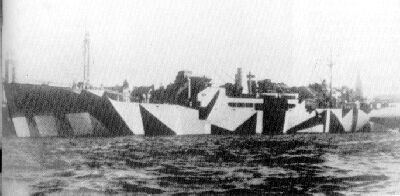
Goya, a freighter without the safety features of a passenger ship or a proper troop transport, sank to a depth of approximately 76 metres (249 ft). As the ship sank in under four minutes, most passengers either went down with her or died of hypothermia in the icy waters of the Baltic Sea.
The exact death toll is difficult to estimate. Authors cite the total number of passengers as "over 6000", 6700, or 7200, although the exact number might never be known, as the evacuated military personnel and civilians boarded the ships in chaotic circumstances and often occupied all available space on ships leaving the German-held enclaves in East Prussia and occupied Poland. In any case, the death toll exceeded 6000, which makes the sinking one of the worst maritime disasters by number of casualties, exceeded only by Wilhelm Gustloff.
The number of survivors is also a matter of dispute. Most place it at around 182 people saved (176 soldiers and 4 civilians), of whom 9 died shortly afterwards. However, other figures are also used, notably 172 and 183.
Discovery of the wreck
The position of the wreck has been known to Polish fishermen for a long time, however, it was not identified and was referred to as "Wreck No. 88" on Polish Navy maps. On 26 August 2002, the wreck was discovered by Polish technical divers Grzegorz Dominik, Michał Porada and Marek Jagodziński, who also salvaged the ship's compass.
Exactly 58 years after the sinking of Goya, the wreck was located on 16 April 2003 by an international expedition under the direction of Ulrich Restemeyer with the help of 3D-Sonar scanning. The position records of Goya's accompanying ships were found to be incorrect, probably made during a hasty escape. During the rediscovery another, smaller, ship had been seen above the wreck, which at first was thought to carry fishermen, but when Restemeyer's Fritz Reuter came close, the ship, seemingly carrying divers, left.
The wreck lies at a depth of 76 meters (249 feet) below the surface of the Baltic Sea and is in remarkably good condition, though covered with nets. Survivors have mourned the tragedy by laying wreaths at the surface to show condolences to the 5,000 people who were killed here.
Shortly after the discovery, the wreck was officially declared a war grave by the Polish Maritime Office in Gdynia. In 2006 the decision was published in an official government gazette of the Pomeranian Voivodeship and thus it is illegal to dive to within 500 metres of the wreck.
